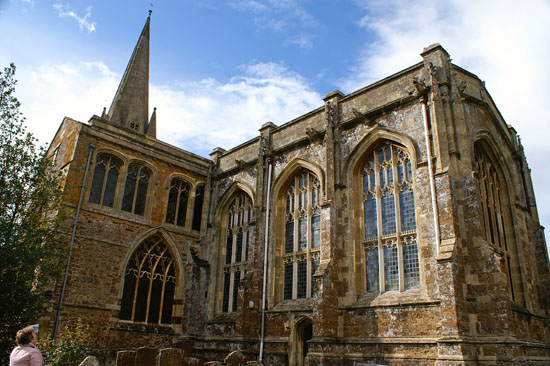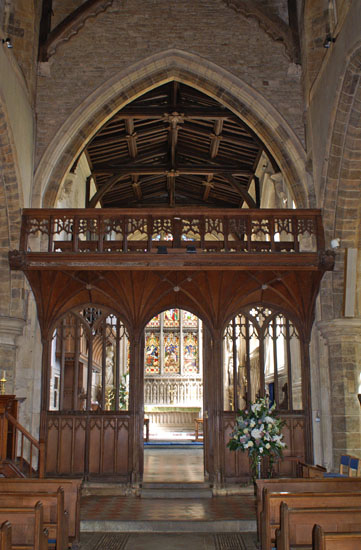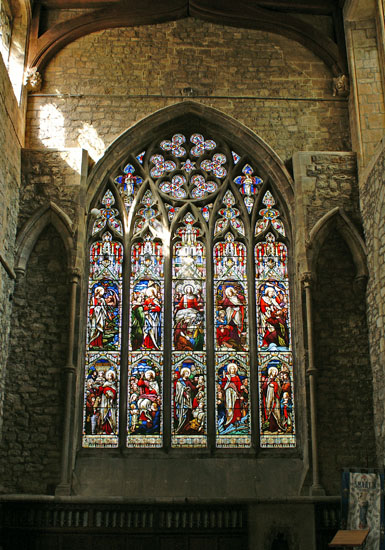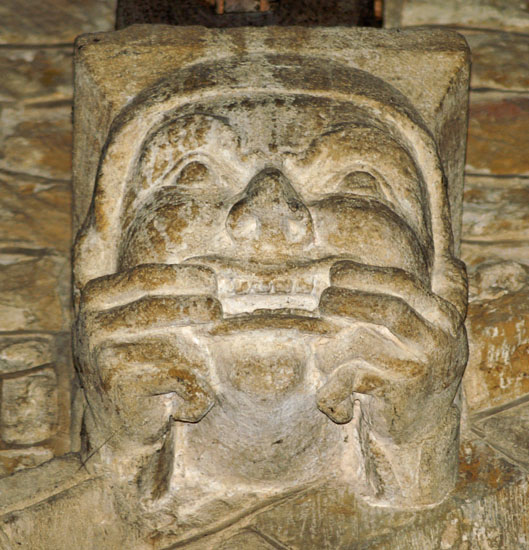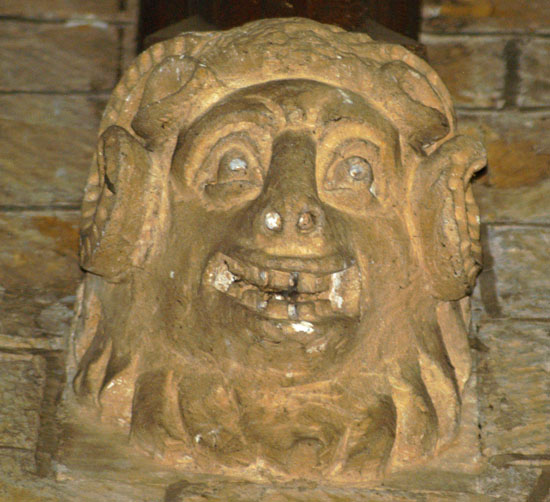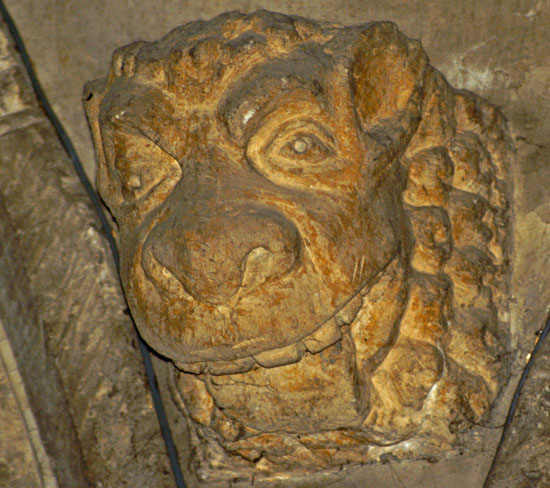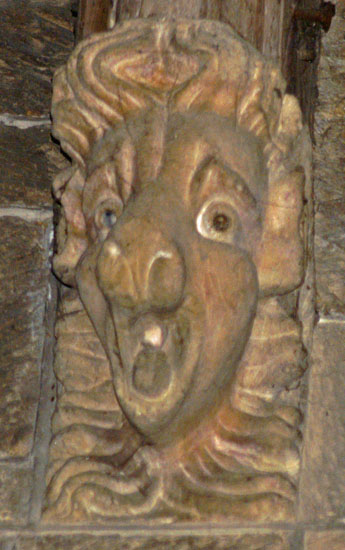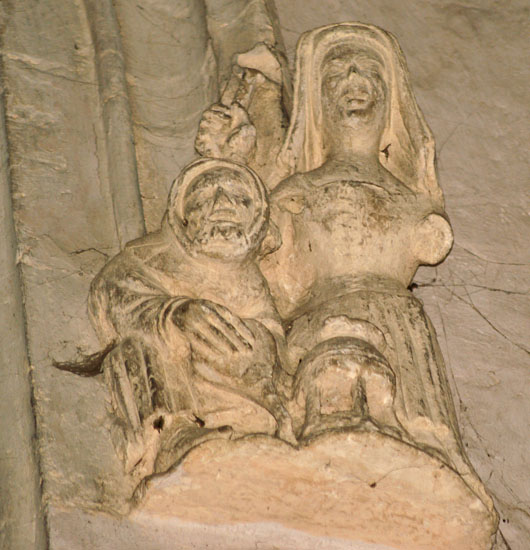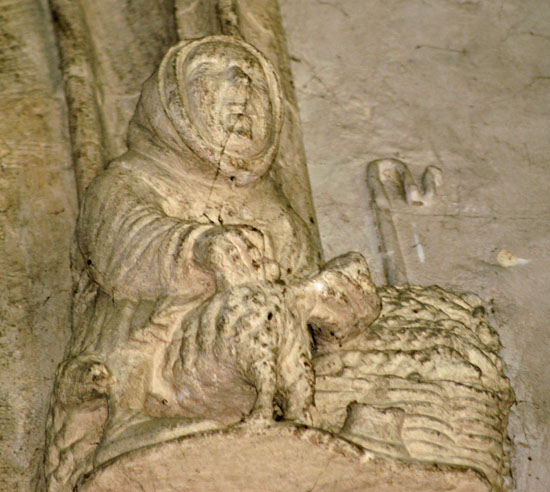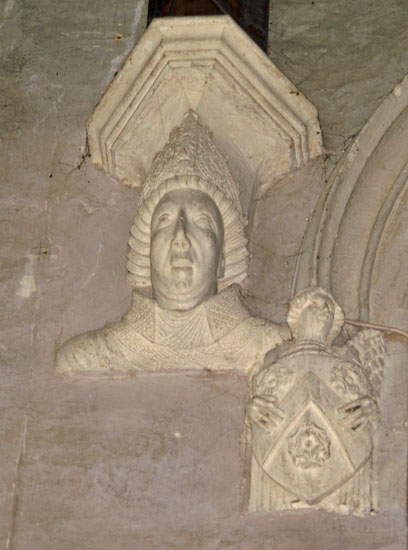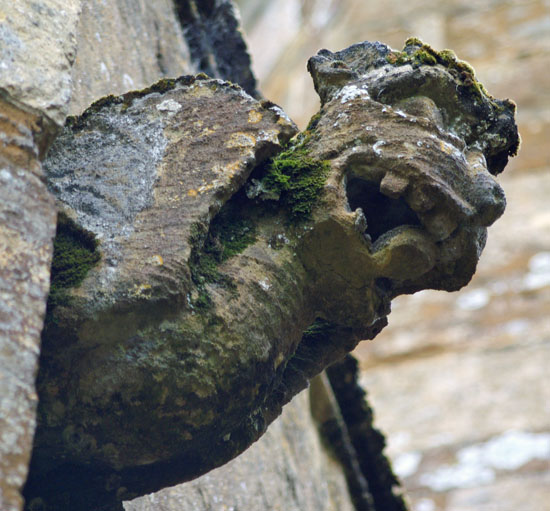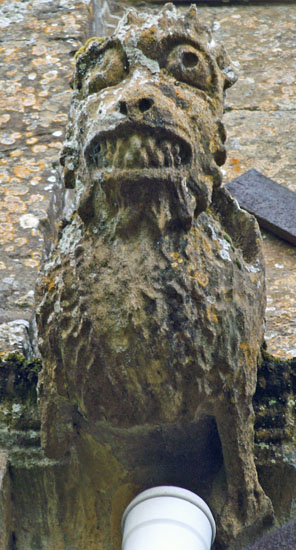|
|
||||||||||||||||||||||||||||||||||||||||||||||||||||||||||
|
Please sign my Guestbook and leave feedback |
||||||||||||||||||||||||||||||||||||||||||||||||||||||||||
|
Recent Additions |
||||||||||||||||||||||||||||||||||||||||||||||||||||||||||
|
|
||||||||||||||||||||||||||||
|
preservation. There are beasts and scenes from village life in abundance. The south side perhaps has the more elaborate pieces with quite a lot that is super-natural (and hard to identify!). The north has more domestic scenes and, best of all, an entire mediaeval orchestra. I had been proud to speculate that my own local church - St John’s Ryhall, Rutland - had the best frieze from this period and there are plenty of other candidates in Lincolnshire, Leicestershire and Rutland. But Adderbury wins hands down with nearby Bloxham not far behind. The similarities of the carvings on the friezes at both these churches and also at Hanwell and Alkerton (both in preparation for this site) leaves little doubt that they were the work of one man. There are only four churches in the Northern Oxfordshire School. Moreover, the carvings seem to pre-date the Great Plague of 1348 which was later to lead to the development of “shop work” at the quarries. So, while the late c14/ early c15 friezes in the East Midlands may well be the work of several men, those in the Northern Oxfordshire School are more likely to be the work of one man - with or without the help of apprentices or journeymen. The carving is not confined to the friezes. The “hollis” around the tower parapet also has whimsical, though rather less elaborate, frieze carvings. The chancel has carved capitals with intertwined human figures, a style also clearly seen at Bloxham, Hanwell, Alkerton and, intriguingly, at Shenington which is not generally listed amongst the Northern Oxon School churches. The tower, nave and aisles all date between 1315 and 1344. Did our carver work on this church and those around it for this long period? Or did he do it towards the end of the overall rebuilding program? 25 years seems a long time in those days of extraordinarily short lifespans. Yet frieze stones are normally part of the structure - not simply stuck on the outside. As with the east Midlands churches, I wonder if the friezes were added at a somewhat later date when parapets were added to aisles and towers? I suppose we have no way of knowing. We will also see superb gargoyles on the Perpendicular chancel exterior and carved corbel stones in the nave. The body of the church fits unusually neatly into three quite distinct periods. Tower, nave and aisles - effectively the west end of the church are all of the Decorated period built between 1315 and 1344. The transepts and the east end of the nave are on the cusp of Early English and Decorated at around 1250. The chancel is Perpendicular between 1408 and 1419. What a church! Simon Jenkins rates Bloxham at 4* (making it one of his top 100) and Adderbury at 3* but for me Adderbury is the more enjoyable if only because its carvings are slightly the better. Simon is in turn, in our view, influenced by his own love of funerary monuments that are clearly more interested at Bloxham. If you are new to church architecture make these two churches two of your “Must See” churches and decide for yourself. |
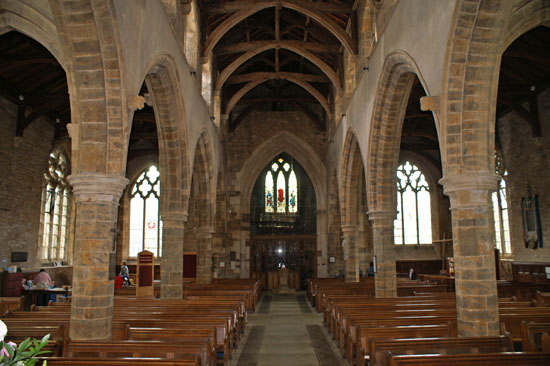 |
|||
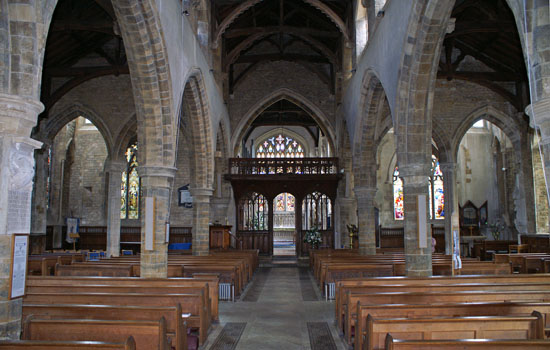 |
|||
|
|
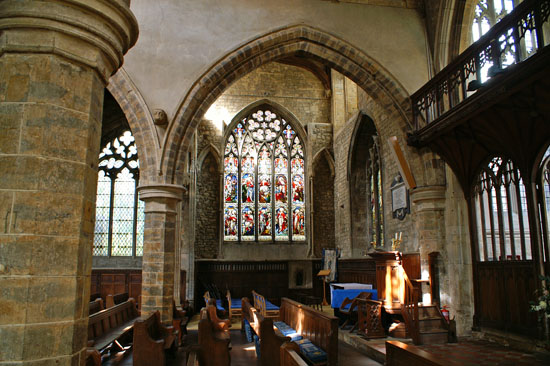 |
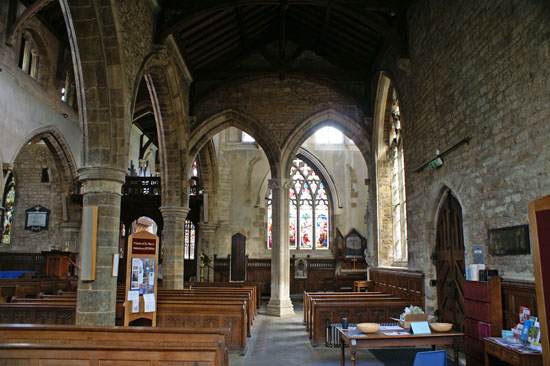 |
|
|
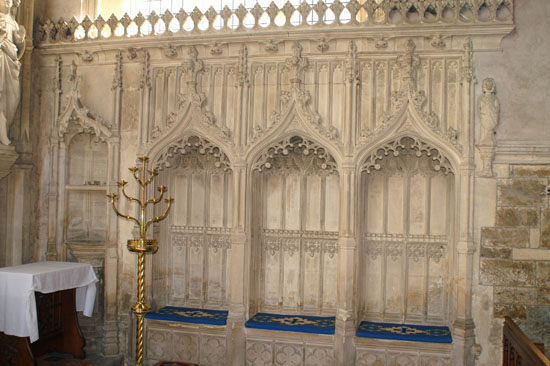 |
|||
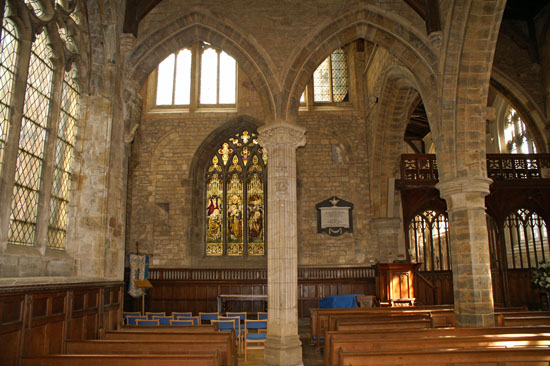 |
|||
|
|
|
|
|
||||||||||||||||||||||||||||||||||||||||||||
 |
|||
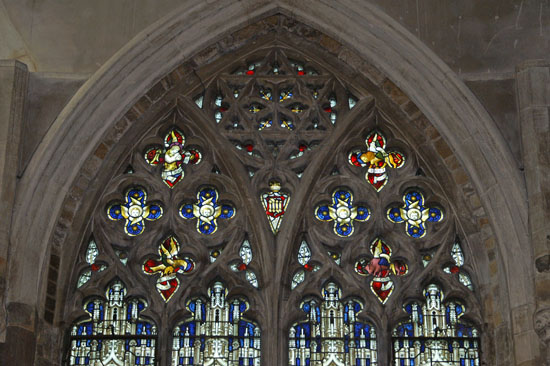 |
|||
|
The window tracery at Adderbury is superb. Sadly, however, almost all of it was ingenious reconstruction by Sir George Gilbert Scott. In the late c18 there was a dispute between the rector and the churchwardens about who was responsible for their repair. The “solution”, sadly, was to rip them out! |
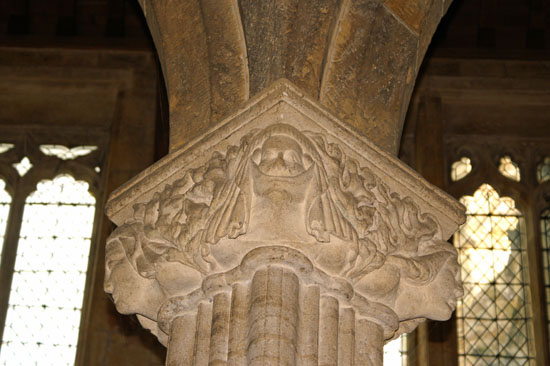 |
|||
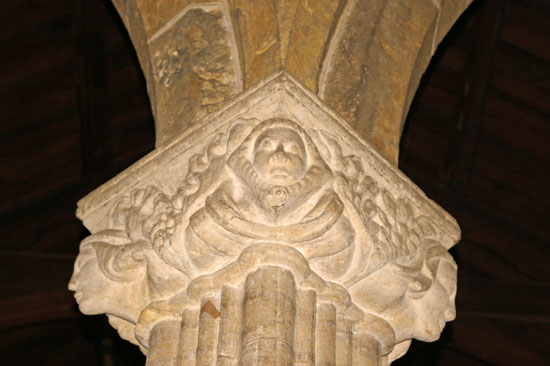 |
|||
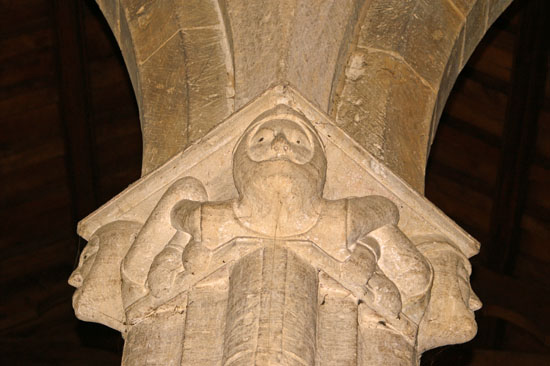 |
|||
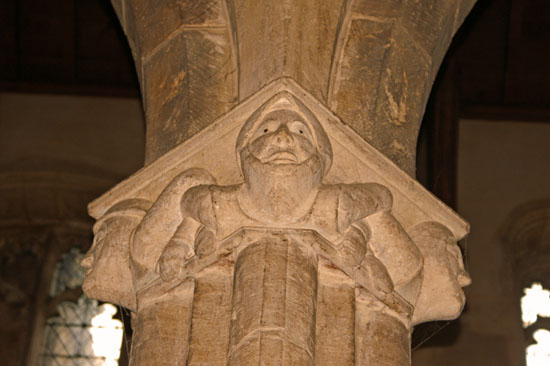 |
|||
|
Both of the two-bay arcades between aisles and transepts have ornate capitals on the central pier. Both depict figures with linked arms, as seen also at Bloxham and Hanwell. That to the north transept depicts (top) whimpled female figures, that to the south (below) male figures in armour - and it must be said that the ladies are the more interesting group, the male figures being somewhat similar to each other. It is believed that these capitals point to segregation of the sexes within the church. |
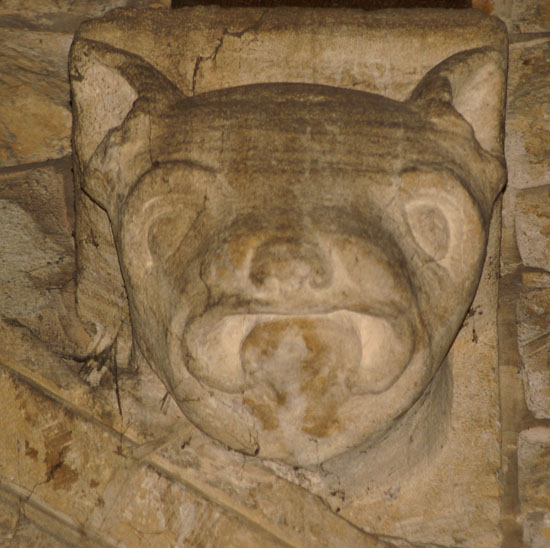 |
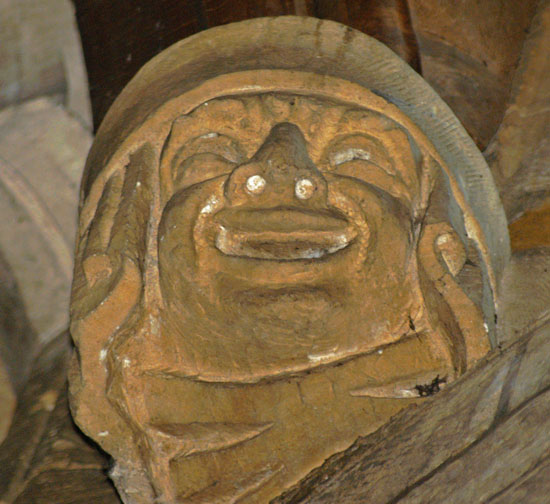 |
 |
 |
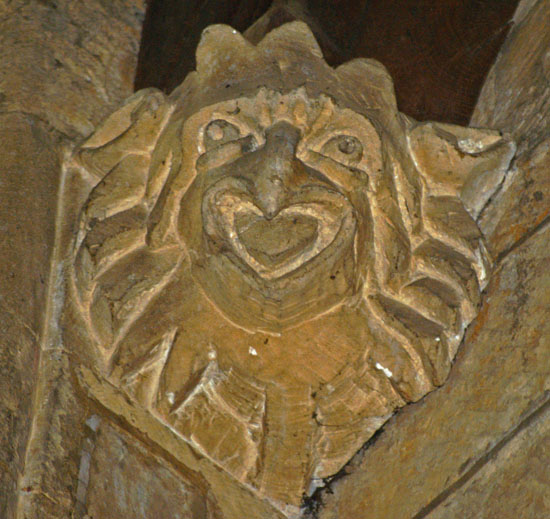 |
|||||
|
|
||||||||||||||||||||||||||||||||||||||||||||||||||||||||
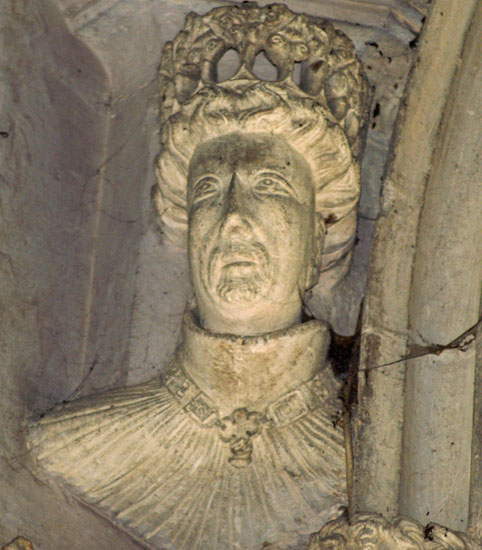 |
||||||||
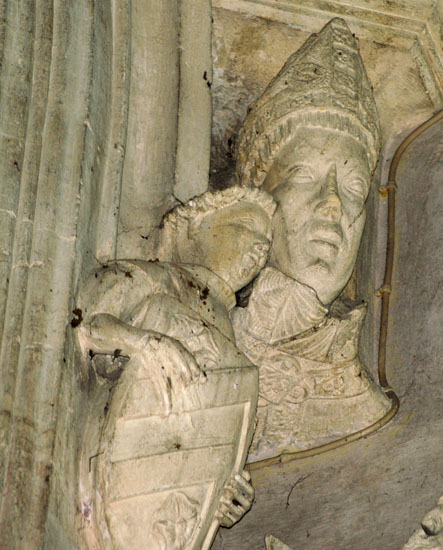 |
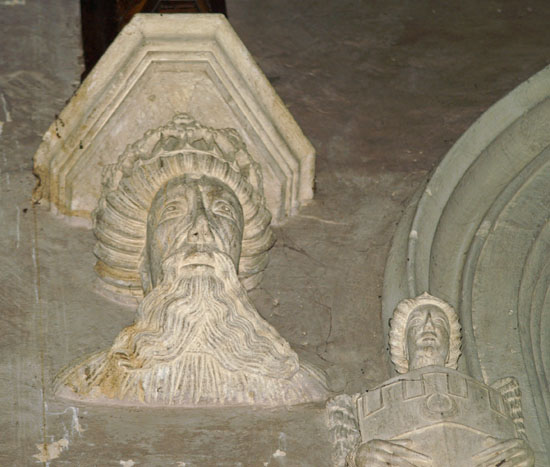 |
|||||||
 |
||||||||
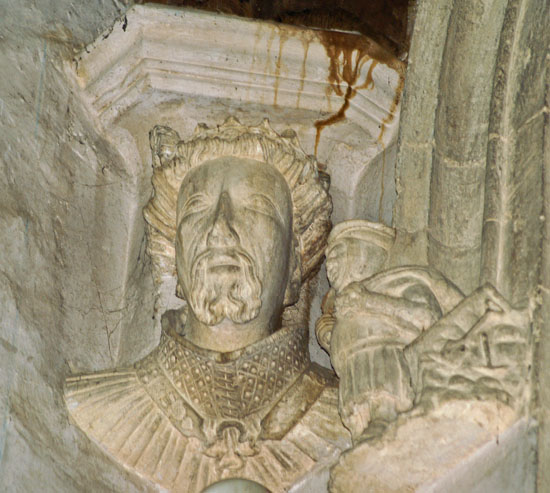 |
||||||||
|
|
|||||||||||||||||||||||||||
|
The South Frieze |
|||||||||
 |
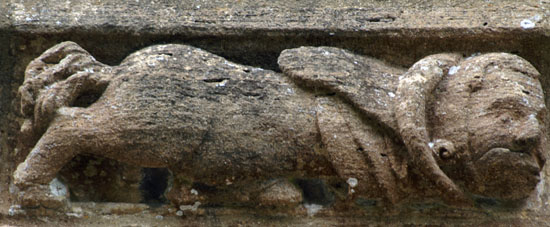 |
||||||||
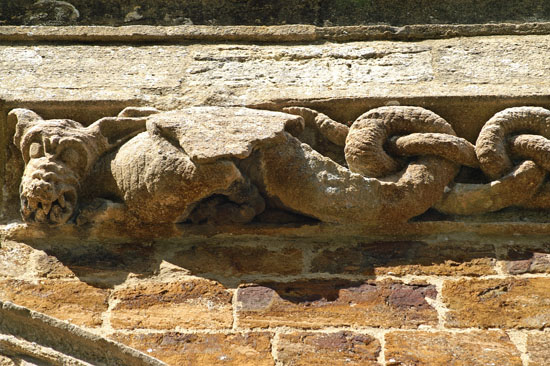 |
|||||||||
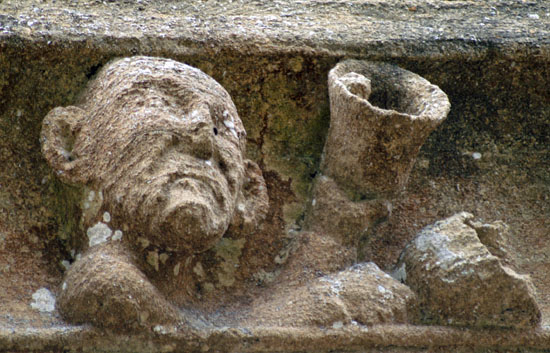 |
|||||||||
 |
|||||||||
 |
|||||||||
|
The frieze on the south side is mainly of fantastical figures. Note, however, top left a man with two dogs (?) on a lead. Below him is a man ringing a bell (one broken) in each hand. These elongated carvings (contrast them with the square adornments on the friezes of, for example Ryhall and Oakham) are characteristic of the North Oxfordshire school. |
|
The North Frieze |
|||||||||
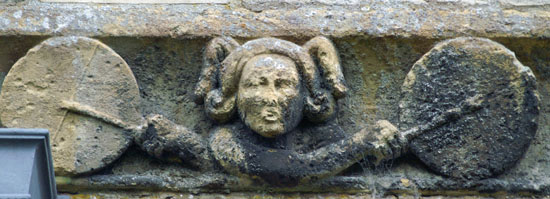 |
|||||||||
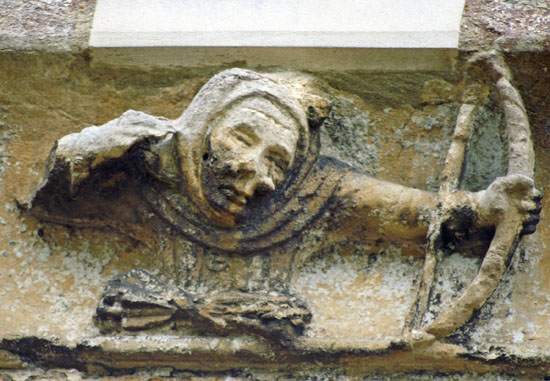 |
|||||||||
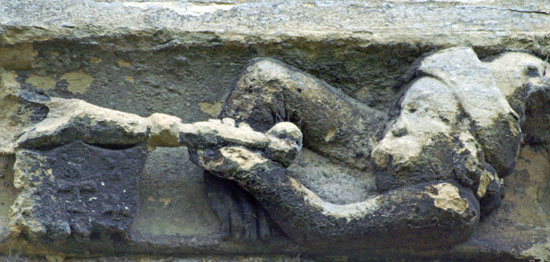 |
|||||||||
 |
|||||||||
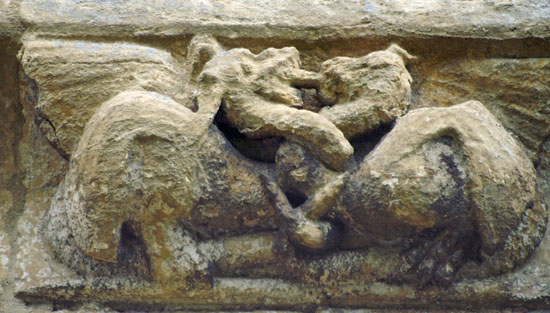 |
|||||||||
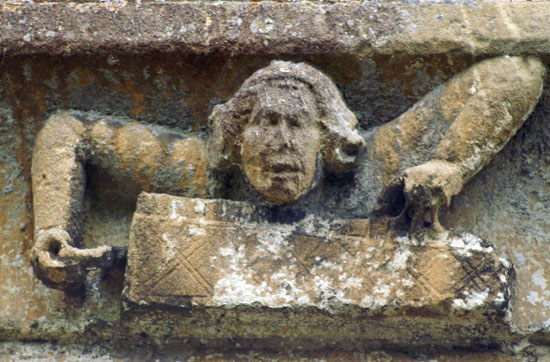 |
|||||||||
 |
|||||||||
|
The North Frieze is my favourite because it contains what appears to be a full mediaeval village band - including a hurdy-gurdy player bottom right. On this side of the church we have mainly figures from village life - and what a fascinating picture they give us of dress and customs of the day. We still have our fantastic creatures, of course, and I particularly love the dragon (bottom left) which looks like something from a modern children’s picture book! |
|
Do not miss the rest of the north frieze - click here to see it. |
|
The Hollis Frieze |
|
|
||||||||||||||||
 |
|||
 |
|||
|
|
|
|
||||||||||||||||||||||||||||||||||||
|
For a Discussion of the Northern Oxfordshire School of Carving, Click Here |
